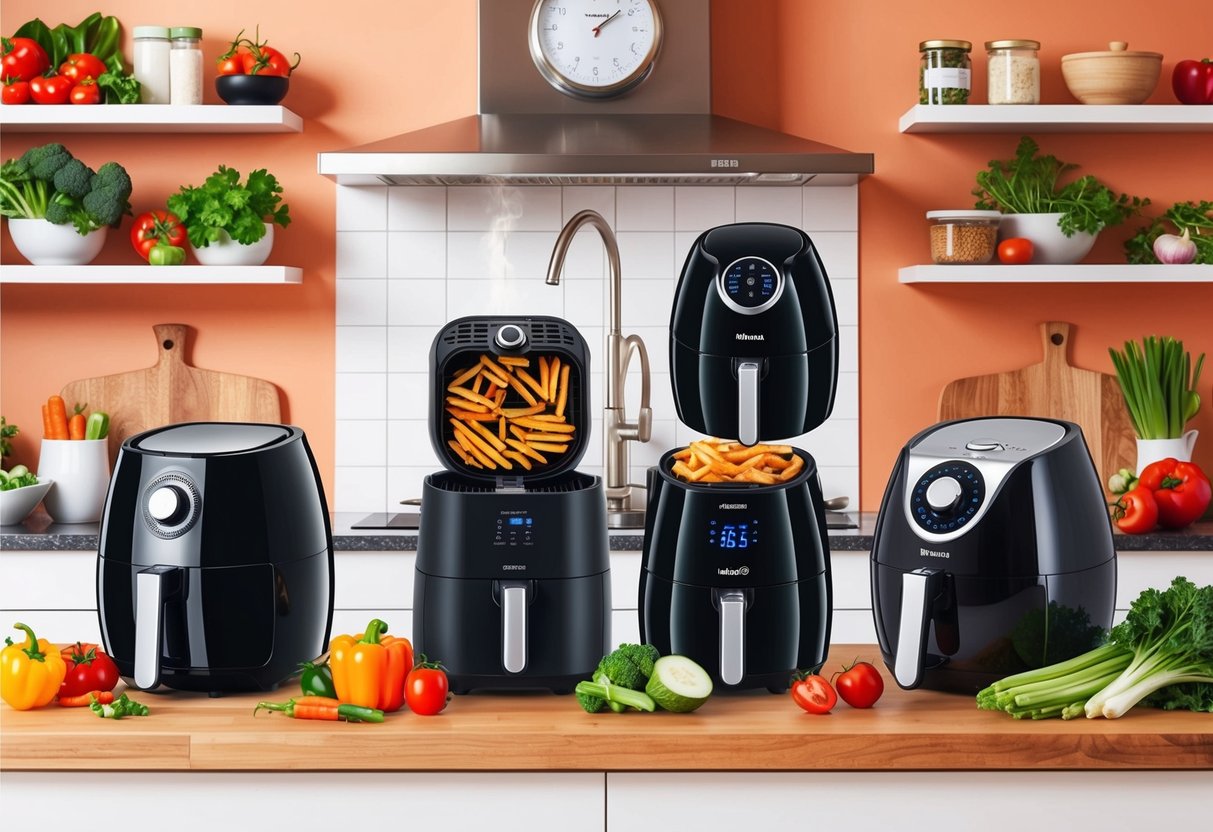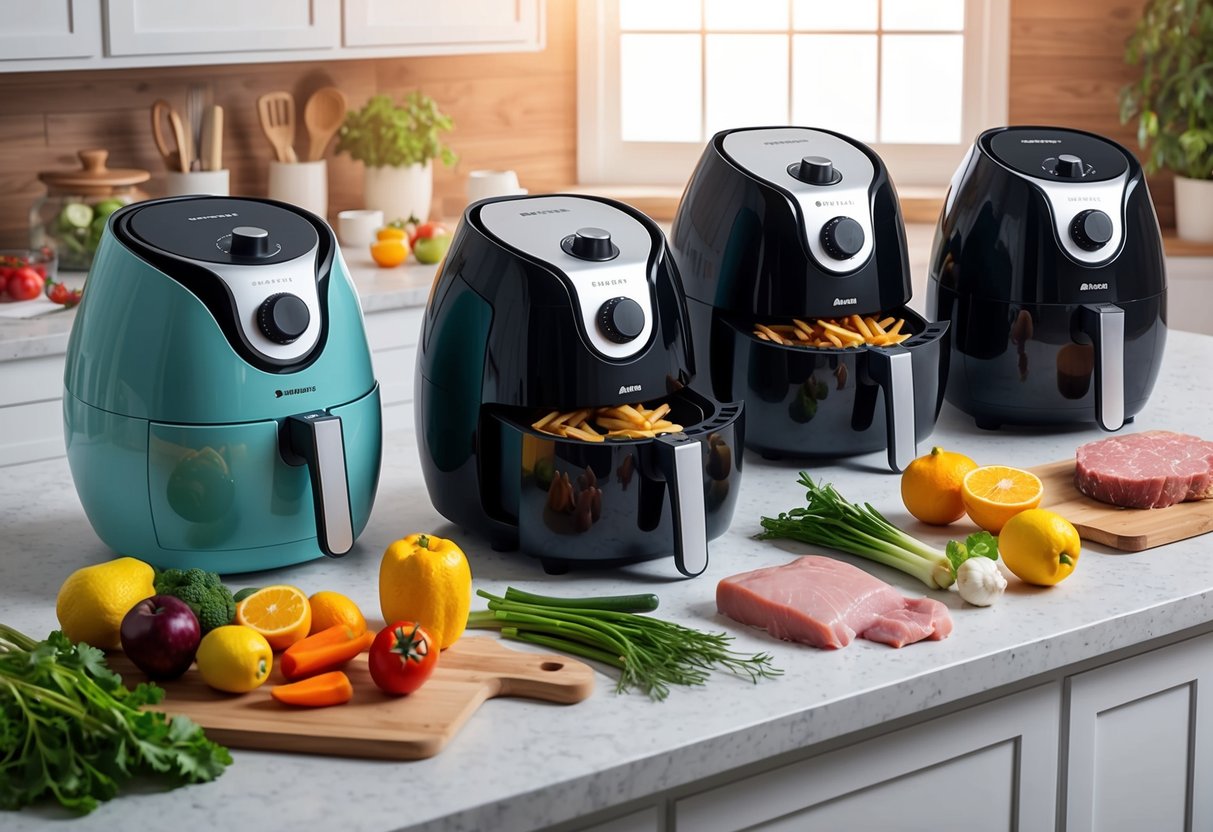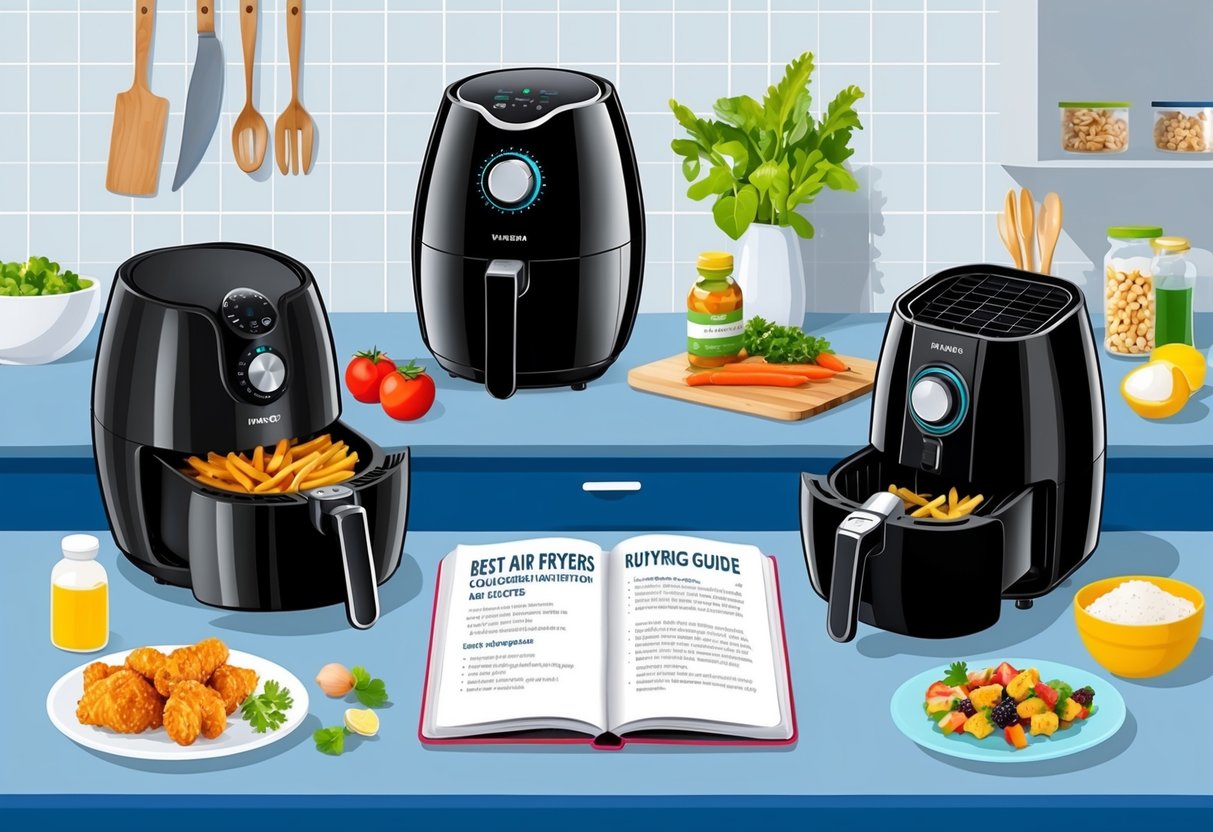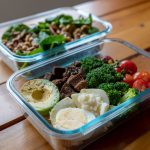
Best Practices and Healthy Air Fryer Recipes

Using an air fryer for healthy cooking can deliver tasty, crispy meals with less oil. Following a few proven techniques and exploring a wide selection of easy recipes helps maximize both nutrition and flavor.
Tips for Achieving Crisp Results
For best results with an air fryer, dryness is key. Pat ingredients dry with a paper towel before cooking—excess moisture leads to steaming rather than crisping.
Arrange items in a single layer in the basket and avoid crowding. This allows hot air to circulate freely.
Halfway through the cook time, shake or flip the food using tongs to ensure all sides become golden. A light spritz of oil can also help, especially with vegetables or breaded items.
Use the proper temperature for each ingredient. Most recipes crisp well at 350°F to 400°F, but delicate items like fish may need lower heat.
Refer to a detailed cooking time guide when unsure to prevent overcooking or undercooking.
Creative Recipes for Every Meal
Breakfast, lunch, and dinner all benefit from air fryer recipes that swap in wholesome ingredients. For breakfast, try air-fried egg cups: whisk eggs with spinach, tomatoes, and a sprinkle of feta cheese, then pour into silicone muffin cups and cook for 10-12 minutes.
At lunch, prepare chicken breast strips coated in whole grain breadcrumbs and air fry until crispy. Dinner options include salmon fillets brushed with olive oil, garlic, and lemon, cooked until just flaking.
Many healthy air fryer recipes use minimal oil and plenty of vegetables. For a snack, chickpeas tossed in paprika and cumin turn delightfully crunchy.
Even desserts, like cinnamon apples, emerge with a tender texture and a caramelized finish. Experiment with seasonal produce for variety and enhanced nutrition.
Frequently Asked Questions

Choosing a quality air fryer involves understanding critical features, material choices, appliance versatility, and user needs like family size and easy maintenance. Brand reputation, construction materials, and cleaning methods impact both health benefits and performance.
What features should I look for in an air fryer to ensure healthy cooking?
Important features for healthy cooking include adjustable temperature controls, a timer, and a nonstick or stainless steel basket. Look for models with minimal plastic parts and dishwasher-safe components.
Effective air circulation, such as a built-in fan, improves crisping with little to no oil.
How do different air fryer brands compare in terms of reliability and performance?
Brands like Ninja, Cosori, Instant Vortex, and Cuisinart are frequently rated for reliability and consistent results. Comparative reviews highlight differences in build quality, preset options, noise levels, and customer service support.
Performance typically reflects ease of use, basket capacity, and long-term durability.
What are the advantages of using a stainless steel air fryer for health-conscious consumers?
Stainless steel air fryers generally offer fewer concerns about chemical leaching compared to models with plastic interiors. They are easy to clean, resist staining, and do not retain odors.
Stainless steel construction also improves heat retention and longevity.
Can an air fryer replace other kitchen appliances for daily cooking needs?
An air fryer can often replace a toaster oven, deep fryer, or even an oven for small meals and snacks. Most models handle roasting, baking, reheating, and grilling.
However, it may not completely replace appliances for baking large batches or cooking oversized items.
What size air fryer is best suited for a family kitchen?
For families of four or more, a basket size of 5 to 7 quarts is recommended to cook larger portions or multiple servings at once. Single- or dual-basket models can streamline meal prep for busy households.
Compact 2- to 4-quart sizes are better for singles or couples.
What maintenance and cleaning tips ensure the longevity of an air fryer?
Unplug and cool the air fryer before cleaning. Remove the basket, tray, and pan.
Wash these components with warm soapy water or place dishwasher-safe parts in the dishwasher. Wipe the main unit’s interior and exterior with a damp cloth.
Check for food debris around heating elements to prevent smoke and odors during future use.



